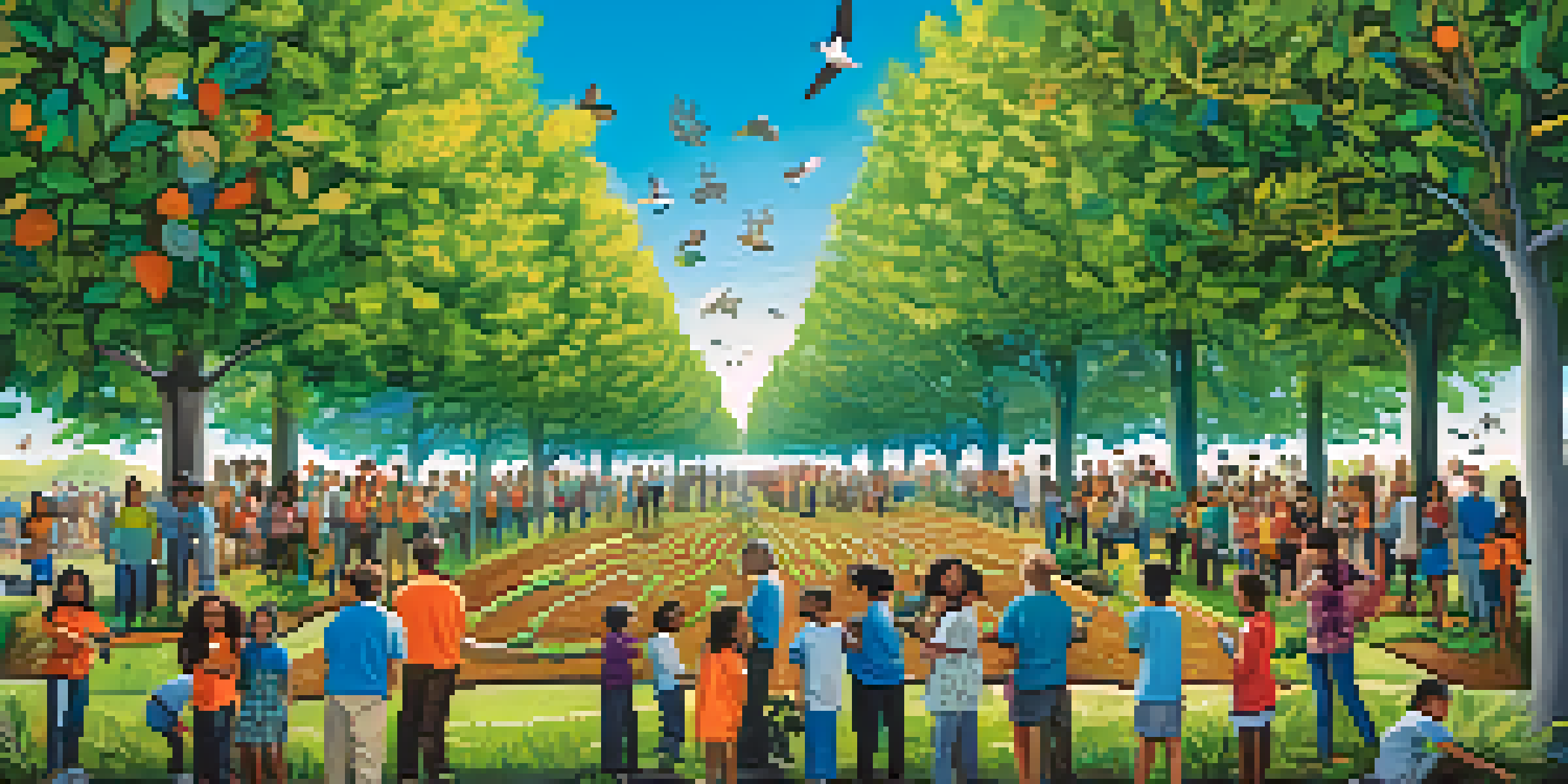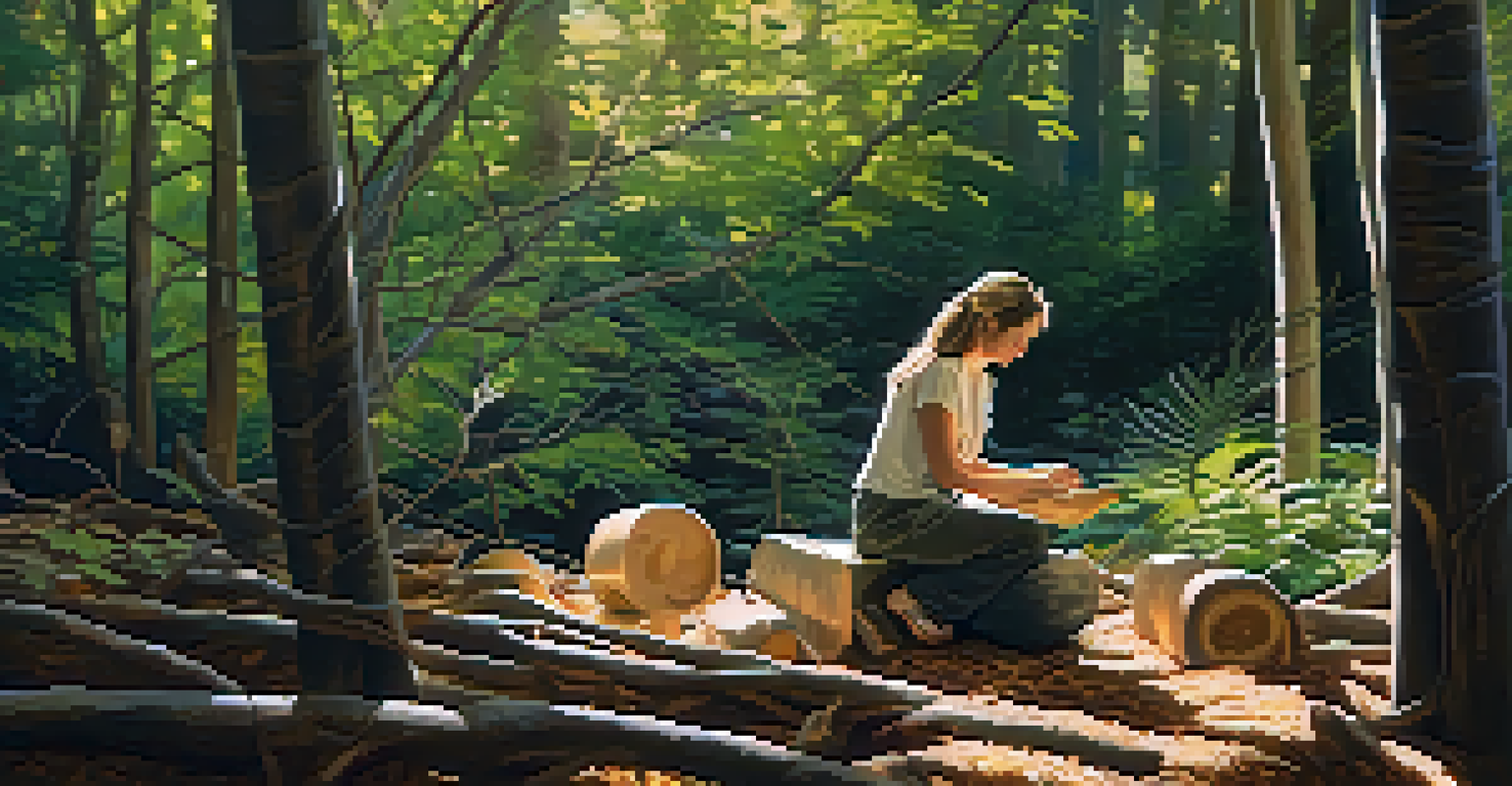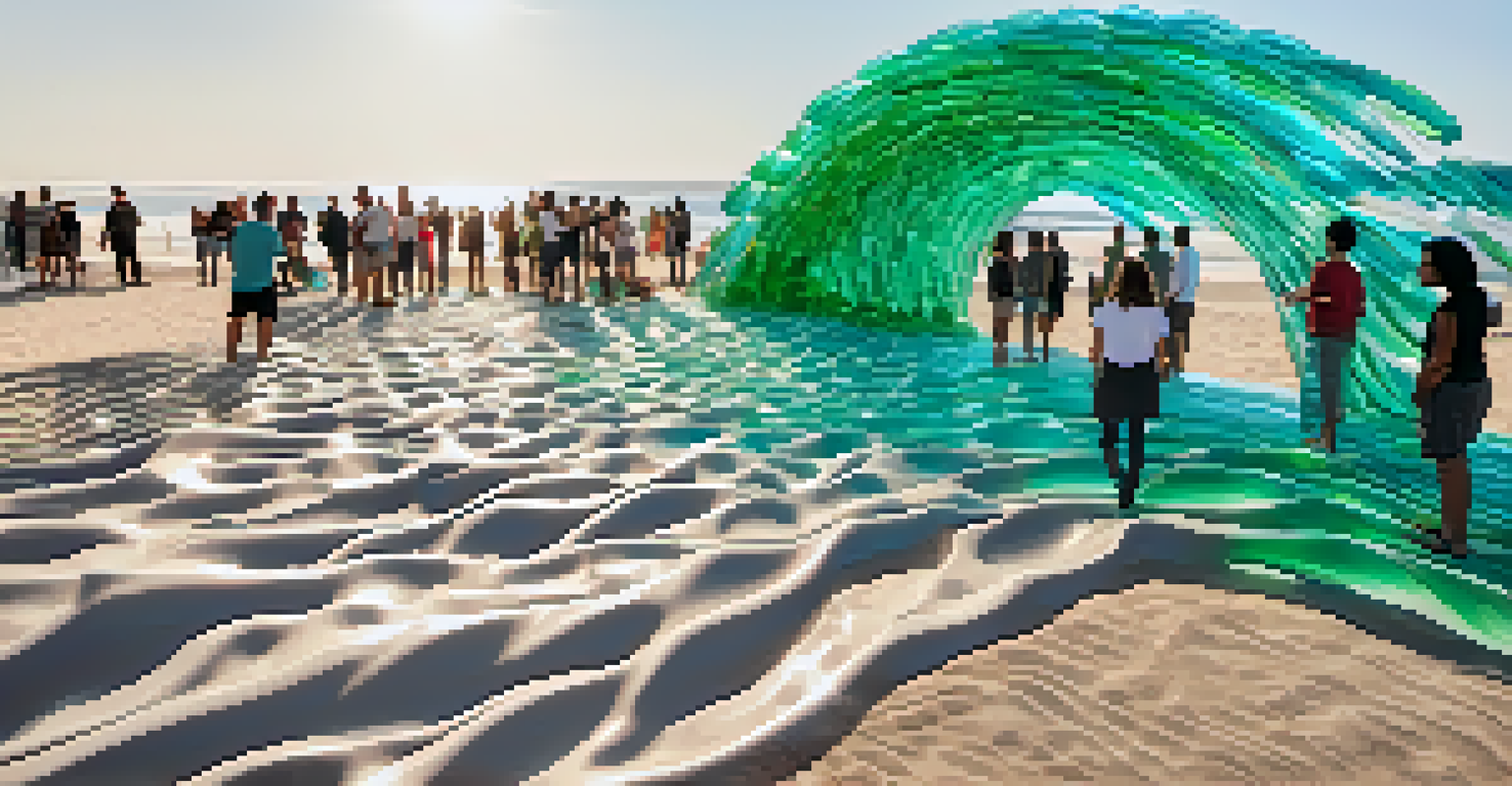The Future of Eco-Art: Trends and Innovations to Watch

The Rise of Sustainable Materials in Eco-Art
As artists become more conscious of their environmental impact, sustainable materials are taking center stage in eco-art. Think of it as a modern-day alchemy where everyday, discarded items are transformed into thoughtful art pieces. This trend not only reduces waste but also encourages a deeper connection between the viewer and the environment.
Art is not a mirror to reflect the world, but a hammer with which to shape it.
From reclaimed wood to biodegradable paints, artists are increasingly selecting materials that reflect their commitment to sustainability. For instance, using recycled plastics can create stunning sculptures that also tell a poignant story about pollution. As more artists embrace these materials, the art world is seeing a shift towards a more responsible and eco-friendly approach.
Moreover, this trend invites audiences to reflect on their own consumption habits. By showcasing art made from sustainable materials, artists spark conversations about environmental stewardship. This dialogue is essential as we navigate a world increasingly affected by climate change.
Digital Innovations: The Intersection of Art and Technology
Digital technology is reshaping the landscape of eco-art, allowing artists to create immersive experiences that engage audiences in unique ways. Virtual reality (VR) and augmented reality (AR) can transport viewers to environments they might not otherwise encounter, highlighting the beauty of nature and the urgent need for its preservation. Imagine stepping into a virtual forest where you can see the impact of deforestation in real-time.

Additionally, digital art can be created with minimal physical materials, reducing waste while still delivering powerful messages. Artists are using software to create stunning visuals that address ecological issues, from climate change to biodiversity loss. This approach not only broadens the reach of eco-art but also makes it more accessible to a global audience.
Sustainable Materials in Eco-Art
Artists are increasingly using sustainable materials, transforming discarded items into impactful art that promotes environmental awareness.
As technology continues to evolve, we can expect even more innovative ways for artists to convey their messages. By merging creativity with tech, eco-art can inspire change on a larger scale, encouraging people to rethink their relationship with the planet.
Community Engagement: Art as a Catalyst for Change
One of the most exciting trends in eco-art is its ability to foster community engagement. Artists are increasingly collaborating with local communities to create works that reflect their collective experiences and challenges regarding environmental issues. This participatory approach transforms art from a solitary endeavor into a shared journey of discovery and activism.
The best way to predict the future is to create it.
For example, community mural projects often involve residents in the artistic process, providing a platform for voices that may otherwise go unheard. These murals can serve as powerful reminders of local environmental issues and the importance of taking action. When communities come together through art, they not only beautify their spaces but also strengthen their bonds and commitment to sustainability.
Furthermore, these community-driven projects can lead to lasting change. By raising awareness and inspiring dialogue, eco-art can galvanize action around local environmental initiatives, encouraging residents to advocate for policies that protect their surroundings. In this way, art becomes an essential tool for fostering environmental literacy and activism.
Nature as Muse: The Influence of Environmental Landscapes
Nature has always been a significant source of inspiration for artists, but the eco-art movement is taking this connection to a new level. Many contemporary artists are immersing themselves in natural landscapes to create works that highlight their beauty and fragility. This direct engagement with nature not only informs their art but also deepens their understanding of environmental issues.
For instance, land artists often utilize natural materials to create site-specific installations that are temporary yet impactful. These works encourage viewers to reflect on the relationship between art and the environment, often prompting a sense of urgency to protect these landscapes. Artists like Andy Goldsworthy exemplify this connection, using the environment itself as both medium and message.
Digital Art Enhances Eco-Messages
Digital innovations like VR and AR are reshaping eco-art, allowing artists to create immersive experiences that highlight ecological issues.
Additionally, nature-inspired art can evoke emotions that spark action. When audiences witness the beauty of untouched landscapes through an artist's eyes, they may feel compelled to protect those spaces. By placing nature at the forefront, eco-art serves as a reminder of what’s at stake if we do not take immediate action.
The Role of Education in Promoting Eco-Art
Education is vital in fostering the next generation of eco-artists and advocates. Art programs that emphasize sustainability not only teach artistic techniques but also encourage students to think critically about their environmental impact. By integrating eco-art into curricula, educators can inspire young minds to use their creativity in ways that contribute to ecological well-being.
Workshops and community programs that focus on eco-art can also empower individuals to express their concerns about environmental issues. For example, teaching skills like upcycling and natural dyeing not only saves resources but also instills a sense of responsibility towards the planet. These hands-on experiences can spark a lifelong passion for sustainability in participants.
Moreover, educational initiatives can raise awareness about pressing environmental issues. Exhibitions and talks that feature eco-art can engage audiences of all ages, prompting them to consider their own roles in fostering a sustainable future. In this way, education becomes a bridge between art and activism, cultivating a culture of care for the environment.
Eco-Art in Public Spaces: Bringing Awareness to the Masses
Public art has the unique ability to reach a wide audience, making it an excellent platform for eco-art. Installations in parks, city squares, or along beaches can draw attention to environmental issues that affect local communities. By placing eco-art in public spaces, artists can engage people from all walks of life in important conversations about sustainability.
For instance, large-scale installations made from recycled materials can create eye-catching visuals that encourage passersby to think critically about waste and consumption. These artworks often serve as conversation starters, leading to discussions about individual and collective responsibility for the environment. When art is accessible, it fosters a sense of community around shared values.
Community Engagement Through Art
Collaborative art projects empower communities to address local environmental issues, fostering dialogue and inspiring action.
Furthermore, public eco-art can inspire collective action. When individuals are moved by an artwork’s message, they may be motivated to join local initiatives or advocate for policy changes. This ripple effect demonstrates the powerful role that art can play in shaping public perception and driving social change.
Global Perspectives: Eco-Art Around the World
The eco-art movement is not limited to one region; it’s a global phenomenon that reflects diverse cultural perspectives on sustainability. Artists from various backgrounds are using their unique experiences to address local environmental issues while connecting with universal themes of conservation and stewardship. This cross-cultural exchange enriches the eco-art dialogue and encourages a broader understanding of ecological challenges.
For example, Indigenous artists often draw upon their rich traditions and deep connections to the land to create works that advocate for environmental justice. Their art can highlight the importance of preserving landscapes and biodiversity, serving as a reminder of the wisdom held within traditional ecological knowledge. This global perspective helps to unify the movement and emphasizes the shared responsibility we all have towards the planet.

As the world becomes more interconnected, the exchange of ideas and practices within eco-art will likely continue to grow. Artists can learn from one another, developing innovative approaches that resonate across cultures. By celebrating these global contributions, eco-art not only amplifies diverse voices but also fosters a collective vision for a sustainable future.